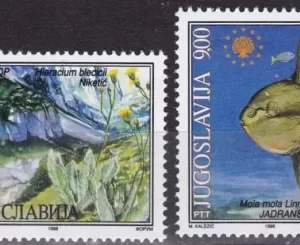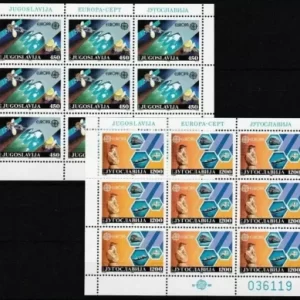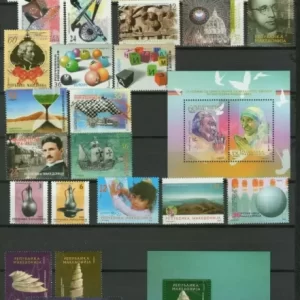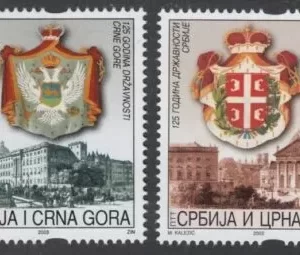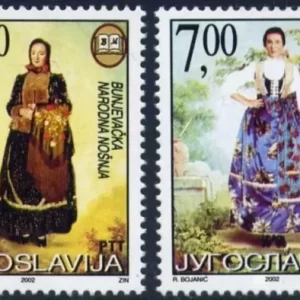Yugoslavia year 1998 stamps Architecture /800 years of Hilandar monastery ☀ MNH**

The Hilandar Monastery is a Serbian monastery situated on Mount Athos, near Esphigmenou, approximately 2 km inland from the northeastern coast of the peninsula. Originally established as a Greek foundation, Hilandar is believed to have been founded in the late 10th century by George Chelandarios (“the Boat-man”). However, it was eventually abandoned and entrusted to the Kostamonitou Monastery. The main church’s plan and its opus sectile floor, as well as portions of the eastern enclosure wall and a large area to the southeast including the Tower of St. George, date back to the monastery’s foundation.
In 1198-99, the monastery was restored as a Serbian koinobion by Stefan Nemanja (died 1199), who took the monastic name Symeon, and his son Sava. Sava composed a typikon in 1199 based on the rule of the Evergetis Monastery in Constantinople. They erected a new church and added a refectory, which was later partially rebuilt. By the early 13th century, Hilandar was home to 90 monks. A chapel in an upper story of the Tower of St. George contains wall paintings dating to the mid-13th century.
The next significant benefactor of Hilandar was Stefan Uroš II Milutin, who in 1303 replaced the late 12th-century katholikon with a new triconch church with a narthex and also restored the refectory. He fortified the monastery and added a tower at the harbor. Originally endowed by Nemanja with 15 Serbian villages, Hilandar became very wealthy and, by the mid-14th century, owned one-fifth of the Athos peninsula, as well as lands extending from Macedonia (especially the Strymon and Chalkidike regions) to Serbia, comprising 360 villages or parts of villages in total. During this time, it held the fourth position in the Athonite hierarchy and was completely independent of the authority of both the Protos and the Byzantine emperor. The hegoumenoi of Hilandar frequently became archbishops of Serbia.
Hilandar emerged as a significant Serbian Orthodox religious and cultural center. Serbian writers Domentian, Teodosije, and Danilo were all monks of Hilandar. It was also a repository of Serbian art, housing an important collection of icons, including a mosaic icon of the Hodegetria believed to date back to the end of the 12th century. In the 14th century, Hilandar was considered a center of icon production, and the Čin (an icon row from the church’s templon) was dated to around 1360, with scholars identifying the same hand that painted a Gospel book in the monastery’s library. The Serbian variant of Old Church Slavonic was developed at the monastery, which housed a scriptorium, a center for translation, and a bilingual library. Most of the approximately 1200 manuscripts preserved at Hilandar are in Slavic, with numerous illuminated manuscripts from the 13th century being especially notable. The archives contain 172 Greek and 154 Serbian documents from the medieval period, providing valuable information on the countryside’s structure, pronoia, taxation, and the economic inequality of peasants.



